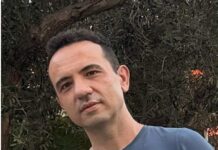Επιμέλεια: Εύα Πετροπούλου Λιανού
Another of my ideas concerns farms, but in a different way. This involves promoting an ancestral cultivation technique, which the Celts first used in Europe, but which has been largely forgotten since the Middle Ages: animal fallows.
As their name suggests, animal fallows, also known as grassy meadows or green meadows, are an agricultural land management technique that involves using fields left fallow for cultivation to graze livestock, particularly sheep or cattle.
Livestock grazing on fallow land helps renew it and fertilizes it by living there, so that soon, the meadows used in this way will be of even better quality than those left as only fallow. We gain from it: in natural fertilizers, in biodiversity, in soil mobility, for the soil is turned over by the animals, and from the livestock’s point of view, of course, in fodder and land usable for pasture. This is what our ancestors did. As I told you, it has been forgotten, and yet, having seen it done on land belonging to my family in Ariège, in France, I can guarantee that the results are surprisingly successful.
The principle of setting aside cultivated land is universal, even mandatory for farmers in many places, and yet these animal fallows I’m talking about are almost never used anywhere. So, this is good advice I want to offer farmers, which will help them revive their fields, which we know are tired, often impoverished by modern farming techniques and the various chemicals we use today.
While I’m talking about farms, I’d like to take this opportunity to tell you how much good I think about permaculture. Permaculture is a farming technique invented in Japan in the 1970s. It consists, primarily for market gardening, of using nature itself and the combinations of plants, including flowers, and crop seedlings, as well as the composition of the soil, to ensure an abundant harvest of vegetables and fruits or cereals, without using any fertilizers or pesticides, just letting nature take its course, so to speak, from what we have sown.
A permaculture food plot, for example, greatly contributes to the biodiversity of a local ecosystem. It’s particularly good for bees and pollinators. I recommend it to every farmer!
And, still talking about nature, I wanted to discuss with you an idea that is particularly close to my heart: the fruit forest.
Here we are again very close to permaculture, with this concept that designates a forest, perhaps a woodland, like so many in our country and around the world, where humans, through their labor to plant or graft fruit trees, allow wild fruits to be harvested in all seasons.
Let me explain: it is very easy to plant fruit tree seedlings in a natural wooded or forest environment, or to graft them onto host trees in the same locations, so that they will bear fruit in the desired season. By varying the species, for example, this can allow an entire forest to be abundant in fruit all year round.
Obviously, it will take a lot of human labor at the outset to achieve this result, a bit like maintaining a full-scale orchard. However, natural rhythms, and the wildlife that inhabits the area where we work, will help farmers and allow the penetration and even expansion of crops in the environment. Once the goal of a fruit-bearing forest is achieved, what benefits will there not be for its owners, first of all, to have an abundance of fruits that continue to grow by themselves almost in all seasons, for their own consumption, of course, or for market gardening, or even for their livestock, or even for the views of the game that this will bring to their land! What benefits will there not be for local biodiversity, for the flourishing of the flora, and of other tree species in particular, thanks to the insects and birds that it will bring, and finally for all the wildlife that will see a new pantry! The entire forest will benefit. This idea is close to my heart. It is particularly easy to envisage in France, where we have so many forests, hedgerows, and so on. And it will be equally so in all temperate wooded areas.
No doubt, it will seem a little utopian, then, for me to call on you to create a “forest of abundance” in this way. That being said, once again, the realization of this idea is very easy, locally at least. Anyone with a wood could achieve it in a few years of work. So, for a result that is understandably so profitable, we might as well get started and do it, right? I wanted to advise this to you!
M. Timothee Bordenave, Paris, France.



































